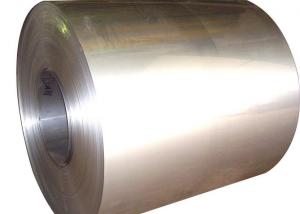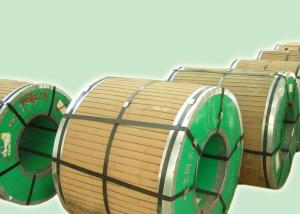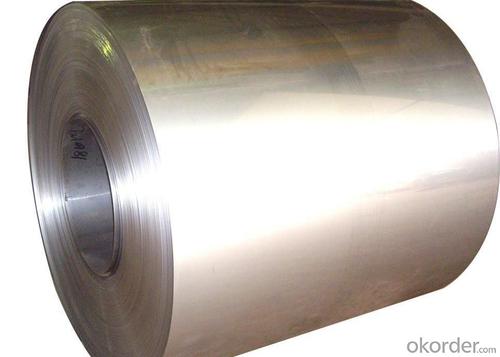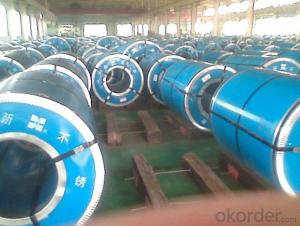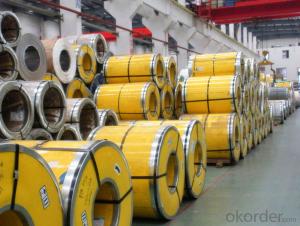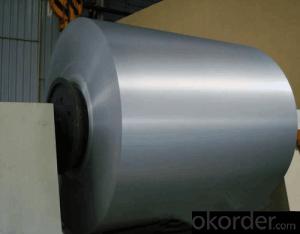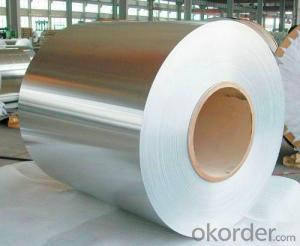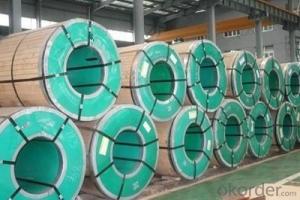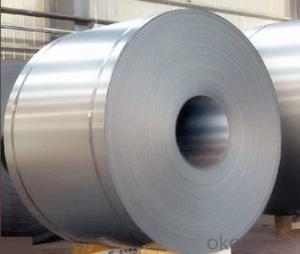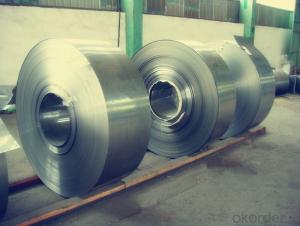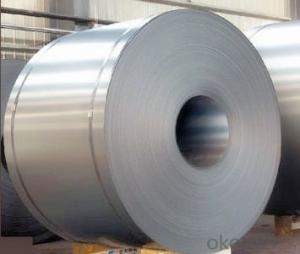AISI 201 Stainless Steel Coil
- Loading Port:
- China Main Port
- Payment Terms:
- TT or LC
- Min Order Qty:
- 1 Ton m.t.
- Supply Capability:
- 1000 Tons Per Month m.t./month
OKorder Service Pledge
OKorder Financial Service
You Might Also Like
AISI 201 Stainless Steel Coil
1. Chemical composition
|
C |
Si |
Mn |
P |
S |
Ni |
Cr |
|
max0.15 |
max1.00 |
5.50-7.50 |
max0.06 |
max0.03 |
max1.00 |
16.00-18.00 |
2. Mechanical properties
|
Yield Strength |
Tensile |
Elongation |
Hardness (HV) |
Hardness (HRB) |
|
245 |
640 |
40 |
253 |
100 |
3. Standard: AISI, ASTM, GB, EN, DIN, JIS
4. Surface: 2B, NO.1, BA, NO.4, Hairline, SB, Mirror finish, Anti-skid, Cherkered etc.
5. Size: Thickness: 0.3-3mm (cold rolled), 3-40mm (hot rolled)
Width: 1000mm or 1219mm or 1240mm for cold rolled, 1500mm for hot rolled.
Length: As customers' request.
6. MOQ: 1 Ton
7. Payment terms:T/T or L/C
8. Packing: Seaworthy package with wooden or Iron pallets with the paper and the steel strip, or as customers' request.
9. Delivery time: Usually about 7 days after we confirming the order, or according to your quantity.
If you have any question or demand, pls feel free to contact me.
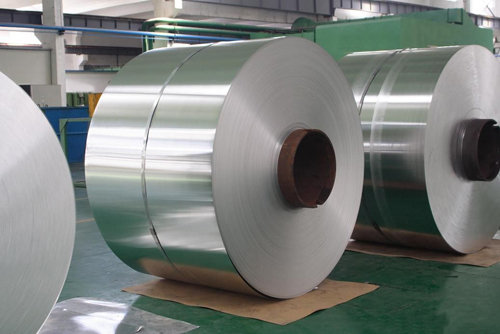

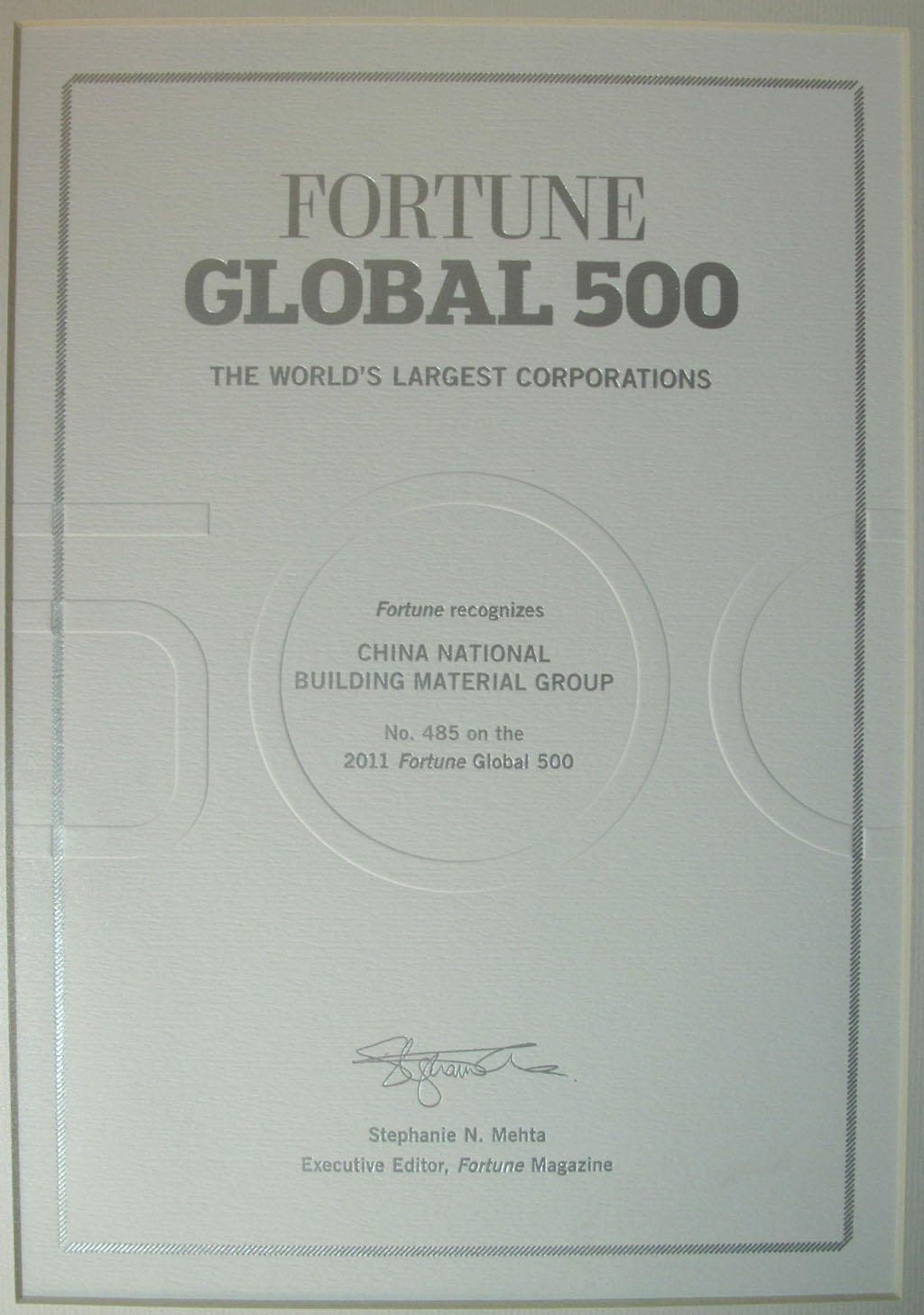
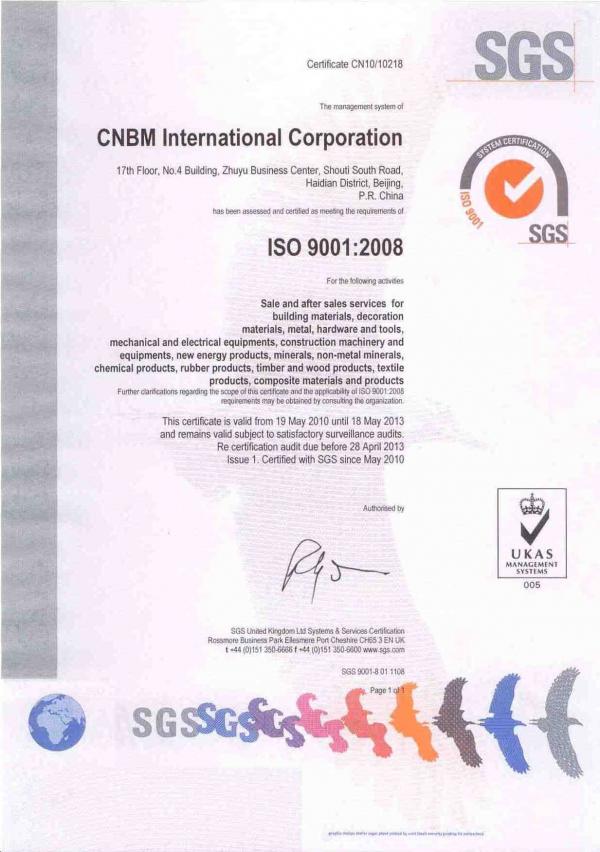
- Q: How do you measure the hardness of a stainless steel strip?
- The hardness of a stainless steel strip can be measured using various methods such as the Rockwell hardness test, the Vickers hardness test, or the Brinell hardness test. These tests involve applying a specific amount of force or load to the surface of the steel strip and measuring the depth or size of the resulting indentation. The hardness value obtained from these tests can be used to determine the material's resistance to deformation and wear.
- Q: Can stainless steel strips be used in the production of chemical tanks?
- Indeed, the utilization of stainless steel strips is feasible for manufacturing chemical tanks. Renowned for its remarkable resistance to corrosion, stainless steel proves to be an appropriate substance for containing and conveying diverse chemicals. The incorporation of stainless steel strips in the fabrication of chemical tanks guarantees robustness, longevity, and immunity to chemical reactions that may transpire within said tanks. Moreover, the strength and capacity of stainless steel to endure elevated temperatures establish it as a trustworthy option for securely storing and transporting chemicals.
- Q: How do stainless steel strips perform in high humidity environments?
- In high humidity environments, stainless steel strips excel. Their built-in resistance to corrosion and rust makes them perfect for use in humid conditions. The presence of chromium in stainless steel creates a protective layer on the surface, preventing moisture from causing harm. This protective layer, called the passive film, is capable of self-repair, ensuring long-lasting durability even in high humidity environments. Moreover, stainless steel strips are highly resistant to pitting and crevice corrosion, which are commonly found in humid conditions. As a result, stainless steel strips are the reliable and preferred choice for various applications, including marine environments, chemical processing plants, and outdoor structures that are subject to high humidity.
- Q: Are stainless steel strips suitable for water treatment plants?
- Yes, stainless steel strips are suitable for water treatment plants. Stainless steel is highly resistant to corrosion and can withstand the harsh conditions and chemicals present in water treatment processes. It offers excellent durability, hygiene, and long-term performance, making it an ideal material for various applications in water treatment plants.
- Q: Can stainless steel strips be used for heat exchanger plates?
- Stainless steel strips are indeed capable of being utilized as heat exchanger plates. Given its exceptional durability and resistance to corrosion, stainless steel proves to be a fitting material for heat exchangers. The strips can conveniently be molded into plates of diverse shapes and sizes, granting flexibility in both design and installation. Moreover, stainless steel boasts outstanding thermal conductivity, guaranteeing effective heat transfer between fluids. All in all, due to their robustness, resistance to corrosion, and thermal conductivity properties, stainless steel strips are widely favored as heat exchanger plates.
- Q: What are the dimensions of stainless steel strips?
- The specific needs and requirements of the application determine the dimensions of stainless steel strips, which can vary. However, these strips are typically found in different thicknesses, ranging from 0.1mm to 6mm, and various widths, ranging from 10mm to 2000mm. The length of stainless steel strips can also vary, although it is commonly sold in coils or rolls of standard lengths like 1000mm or 2000mm. Furthermore, stainless steel strips can be tailor-made to fit individual project requirements by cutting them to specific dimensions.
- Q: Can stainless steel strips be used in the nuclear industry?
- The nuclear industry finds stainless steel strips highly useful. Its exceptional corrosion resistance and mechanical properties make stainless steel a popular choice for various applications in this industry. Stainless steel is commonly employed in the construction of nuclear power plants, nuclear reactors, and related equipment. In the nuclear industry, stainless steel strips serve numerous purposes. For example, they play a crucial role in fabricating nuclear fuel assemblies - essential components of nuclear reactors. These fuel assemblies house fuel rods that produce heat through nuclear fission. The use of stainless steel strips ensures the structural integrity and safety of the fuel assemblies by providing necessary support. Furthermore, stainless steel strips are utilized in constructing containment vessels and pressure vessels in nuclear plants. These vessels are responsible for containing radioactive materials and ensuring the safety of personnel and the surrounding environment. Stainless steel's resistance to corrosion and ability to withstand high temperatures make it an ideal choice for these critical applications. Moreover, stainless steel strips are employed in manufacturing various components like piping systems, heat exchangers, valves, and pumps in nuclear facilities. These components require materials that can endure harsh operating conditions, including high temperatures, radiation exposure, and corrosive environments. Stainless steel's durability and resistance to corrosion make it a reliable material for these applications. In conclusion, the nuclear industry extensively relies on stainless steel strips due to their exceptional properties, making them suitable for diverse applications. The industry depends on stainless steel's corrosion resistance, mechanical strength, and high-temperature tolerance to ensure the safety and efficiency of nuclear power generation.
- Q: Are stainless steel strips suitable for brewery tanks?
- Indeed, brewery tanks find stainless steel strips to be incredibly suitable. Given its outstanding corrosion resistance, durability, and hygienic qualities, stainless steel remains a favored option for brewery equipment. By utilizing stainless steel strips, the tanks are safeguarded against rust, staining, and chemical reactions, rendering them exceptionally well-suited for beer storage and fermentation. Moreover, stainless steel's ease of cleaning is paramount in preserving the beer's quality and flavor. Consequently, incorporating stainless steel strips in brewery tanks emerges as a dependable and pragmatic decision for the brewing industry.
- Q: Can stainless steel strips be used in marine applications?
- Yes, stainless steel strips can be used in marine applications. Stainless steel is highly resistant to corrosion, making it suitable for use in marine environments where exposure to saltwater, moisture, and other harsh conditions is common. Its durability and strength make it an ideal choice for marine applications such as boat fittings, marine hardware, and shipbuilding.
- Q: Can stainless steel strips be soldered?
- Soldering stainless steel strips can be accomplished, but it necessitates specific methods and materials. Due to its high melting point and low thermal conductivity, conventional soldering techniques may not yield satisfactory results. Nevertheless, it is achievable to solder stainless steel by utilizing dedicated fluxes and solders that are specially designed for this purpose. These products are typically composed of nickel or silver alloys, which have a lower melting point compared to stainless steel. Moreover, the stainless steel surface might need to undergo preparation through abrasives or chemical treatments to enhance adhesion. In summary, soldering stainless steel necessitates the use of specialized equipment and materials, but it is certainly feasible when employing the appropriate techniques and products.
1. Manufacturer Overview
| Location | Guangzhou,China |
| Year Established | 2001 |
| Annual Output Value | Above US$0.5 Million |
| Main Markets | Southeast Asia, Europe |
| Company Certifications | ISO 9001:2008; |
2. Manufacturer Certificates
| a) Certification Name | |
| Range | |
| Reference | |
| Validity Period |
3. Manufacturer Capability
| a) Trade Capacity | |
| Nearest Port | Shanghai |
| Export Percentage | 30% |
| No.of Employees in Trade Department | 10 People |
| Language Spoken: | English;Chinese |
| b) Factory Information | |
| Factory Size: | Above 30,000 square meters |
| No. of Production Lines | Above 7 |
| Contract Manufacturing | OEM Service Offered;Design Service Offered |
| Product Price Range | Average |
Send your message to us
AISI 201 Stainless Steel Coil
- Loading Port:
- China Main Port
- Payment Terms:
- TT or LC
- Min Order Qty:
- 1 Ton m.t.
- Supply Capability:
- 1000 Tons Per Month m.t./month
OKorder Service Pledge
OKorder Financial Service
Similar products
Hot products
Hot Searches
Related keywords
